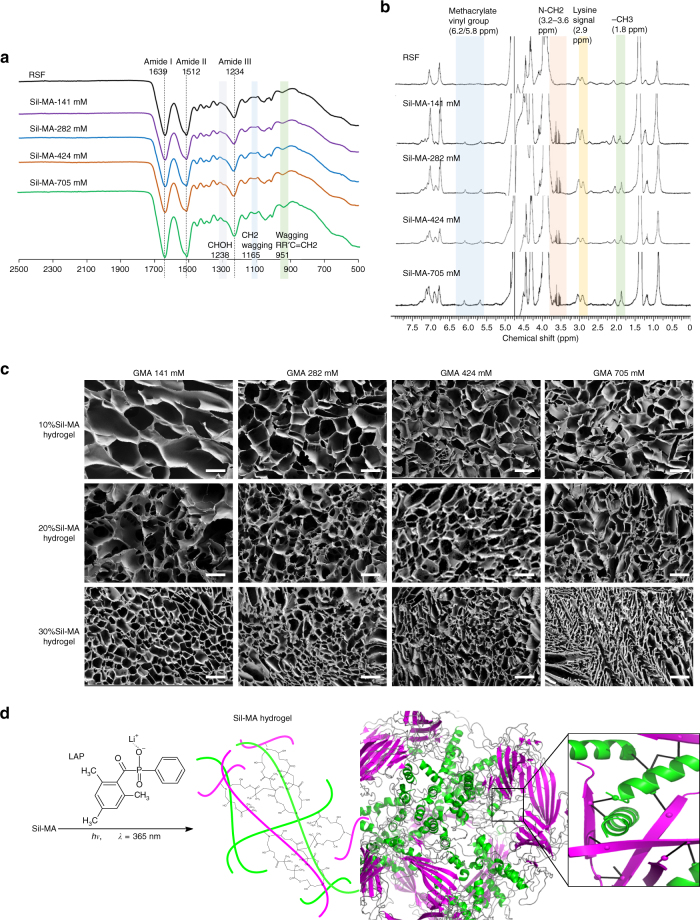Fig. 2.
Characterization of Sil-MA pre-hydrogel and Sil-MA hydrogel depending on methacrylation degrees. a FT-IR spectra and b 1H-NMR spectra of unsubstituted SF and Sil-MA. In the FT-IR spectra, amide I (1639 cm−1), amide II (1512 cm−1), and amide III (1234 cm−1) shown in β-sheet of SF and spectra related with GMA such as CHOH, RR′C=CH2 were found. The modification of lysine residues in SF with the increase of GMA was confirmed by the gradual decrease in the lysine signal at δ = 2.9 ppm and the increase in the methacrylate vinyl group signal at δ = 6.2–6 and 5.8–5.6 ppm, and the methyl group signal at δ = 1.8 ppm. c FE-SEM images of Sil-MA hydrogels, presenting the effect of the degree of methacrylation and Sil-MA contents on the pore sizes of Sil-MA hydrogels. Scale bar represents 100 μm. d Reaction process for the photopolymerization of Sil-MA in the presence of LAP photoinitiator and 3D structure of Sil-MA hydrogel formed via digital light process (DLP) printing. With the presence of photoinitiator, the vinyl double bonds on GMA could react with each other intra-chain or between chains. SF chains themselves could entangle each other during photopolymerization. Green and magenta colors indicate alpha helix and beta sheet motif in the secondary structure of SF, respectively

